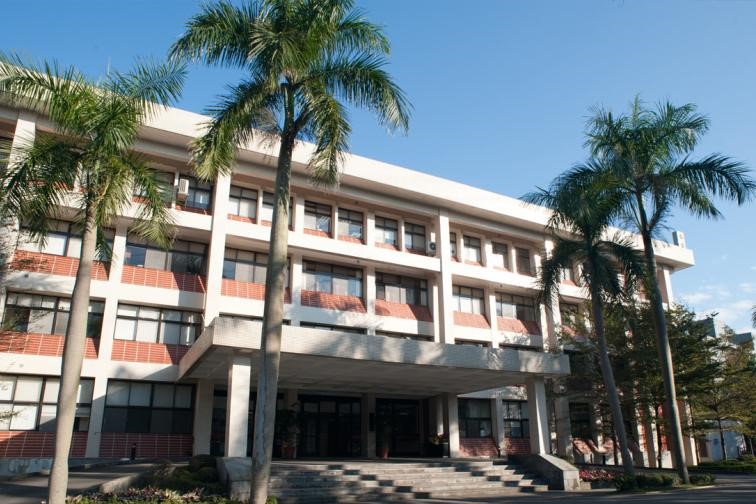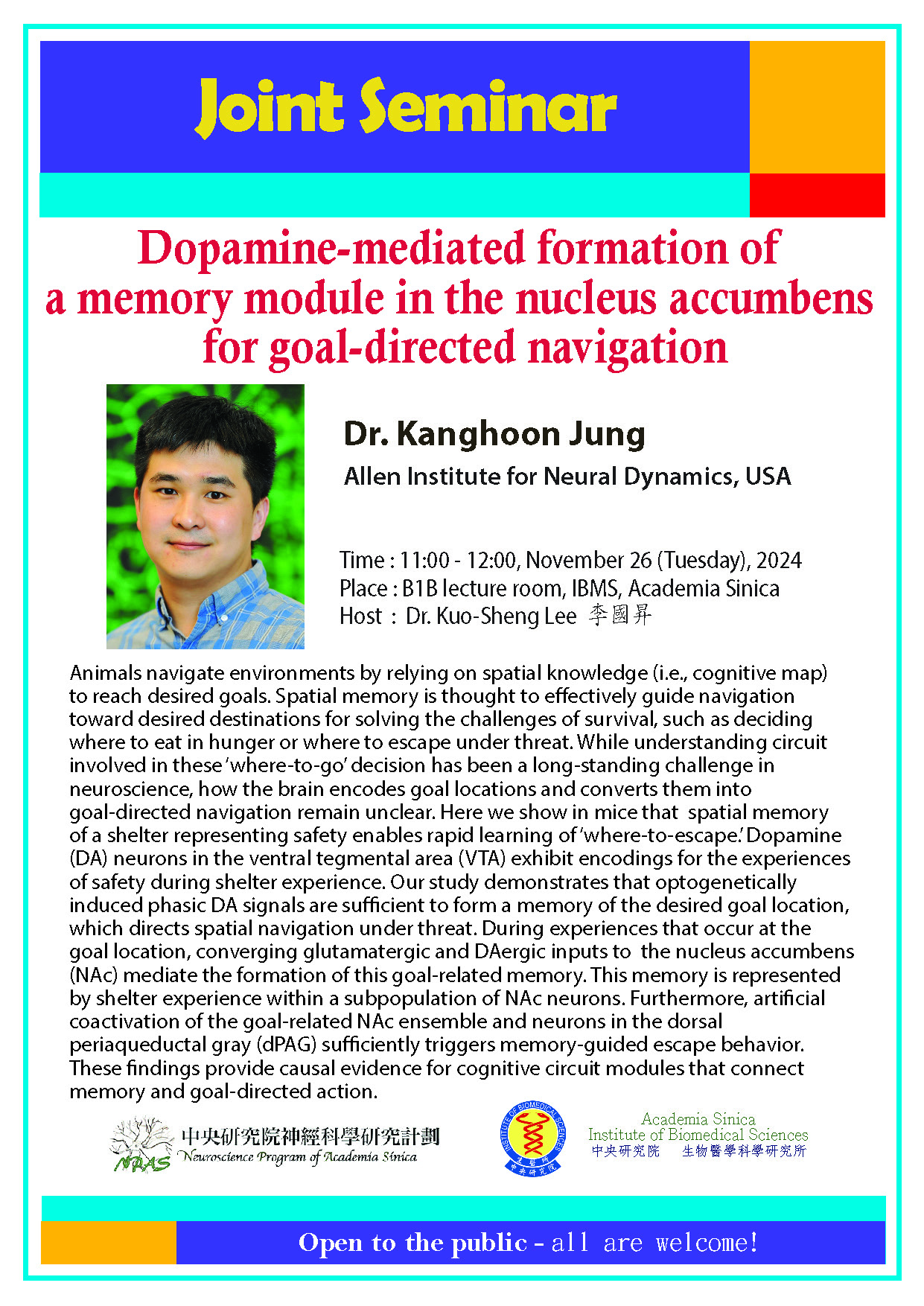- 座談會與工作坊
- 生物醫學科學研究所
- 地點
生醫所地下室B1B演講廳
- 演講人姓名
Dr. Kanghoon Jung (Allen Inst. for Neural Dynamics)
- 活動狀態
確定
- 活動網址
Animals navigate environments by relying on spatial knowledge (i.e., cognitive map) to reach desired goals. Spatial memory is thought to effectively guide navigation toward desired destinations for solving the challenges of survival, such as deciding where to eat in hunger or where to escape under threat. While understanding circuit involved in these ‘where-to-go’ decision has been a long-standing challenge in neuroscience, how the brain encodes goal locations and converts them into goal-directed navigation remain unclear. Here we show in mice that spatial memory of a shelter representing safety enables rapid learning of ‘where-to-escape.’ Dopamine (DA) neurons in the ventral tegmental area (VTA) exhibit encodings for the experiences of safety during shelter experience. Our study demonstrates that optogenetically induced phasic DA signals are sufficient to form a memory of the desired goal location, which directs spatial navigation under threat. During experiences that occur at the goal location, converging glutamatergic and DAergic inputs to the nucleus accumbens (NAc) mediate the formation of this goal-related memory. This memory is represented by shelter experience within a subpopulation of NAc neurons. Furthermore, artificial coactivation of the goal-related NAc ensemble and neurons in the dorsal periaqueductal gray (dPAG) sufficiently triggers memory-guided escape behavior. These findings provide causal evidence for cognitive circuit modules that connect memory and goal-directed action.









 首頁
首頁

